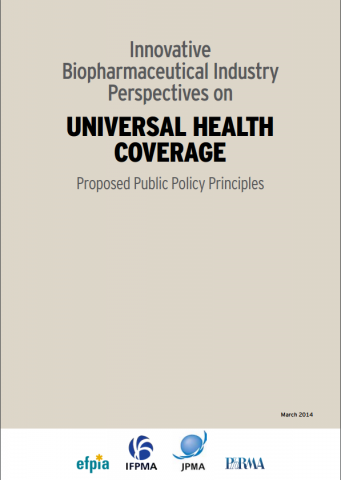
Boosting
Innovation and Access
Health technology assessment
Technology use in healthcare. Doctors hands using smartphone displaying an Xray CT scan of knee
Financing mechanisms for health and medicines
We represent our biopharma members in the on-going discussions taking place at the World Health Organization on financing of healthcare, affordability, valuing healthcare and evidence-based decision making.
In considering how to make evidence-based decisions on healthcare, international and national agencies should consider these key policy principles.
Evaluation systems should:
- be holistic and consider all impacts of medical technologies, including medicines, assessing both the benefits as well as costs,
- consider national health systems and circumstances and tailor the use of medical technologies to local circumstances,
- have transparent processes that involve all stakeholders,
- have as an objective to increase access to new medical technologies,
- inform and promote patient choice, and
- encourage innovation and experimentation.



Achieving the goals of universal health coverage (UHC) in low- and middle income countries requires a structured, collaborative effort that ensures health systems use resources effectively and efficiently. In this regard, governments, payers, and clinicians need to consider a range of decision-making tools to prioritize health care interventions and ensure patients have access to quality health care products and services to prevent, diagnose, and treat diseases. While there are many evidence-informed decision-making tools available, some governments and payers use health technology assessment (HTA) to help inform health policy decisions.

The most conventional form of HTA is “micro-level” HTA, which focuses on the assessment of individual health technologies such as drugs and medical devices. However, “micro-level” HTA of individual technologies is unlikely to address the systemic challenges faced by healthcare systems in low- and middle income countries. In contrast, “macrolevel” HTA specifically addresses patient access to high quality medical care by assessing the effectiveness and efficiency of interventions within the whole health system and informing the prioritization of health care services. Evidence informed benefits design uses “macrolevel” HTA to inform payers’ decisions on what products and services to cover in benefits packages as countries progress towards UHC and expand beyond basic benefits packages toward comprehensive coverage.
Our innovative biopharma industry believes evidence-informed benefits design that is patient-centered and takes into account the health care delivery system as a whole can help promote long-term sustainability and flexibility in meeting UHC objectives while ensuring that priority setting reflects social values and preferences for investment in health care.
According to a 2015 WHO survey, high-income countries are much more likely than low-income countries to use HTA for determining reimbursement or to decide what to include in a benefits package. Middle-income countries tend to use HTA to inform clinical practice guidelines and protocols (85%) more often than in high- and low-income countries (46% and 50%). Less than 60% of countries in any income category used HTA for pricing of health products (WHO 2015 Global Survey on Health Technology Assessment by National Authorities).
7.2 %
of GDP invested in health vs. 2.8% in Pakistan for 2013
79 years
average life expectancy in high income countries vs. 59 years in low income countries
8
of world’s 49 poorest countries can finance a set of basic services with own domestic resources








